Tollefson's Standard Chase
Tollefson's Standard Chase
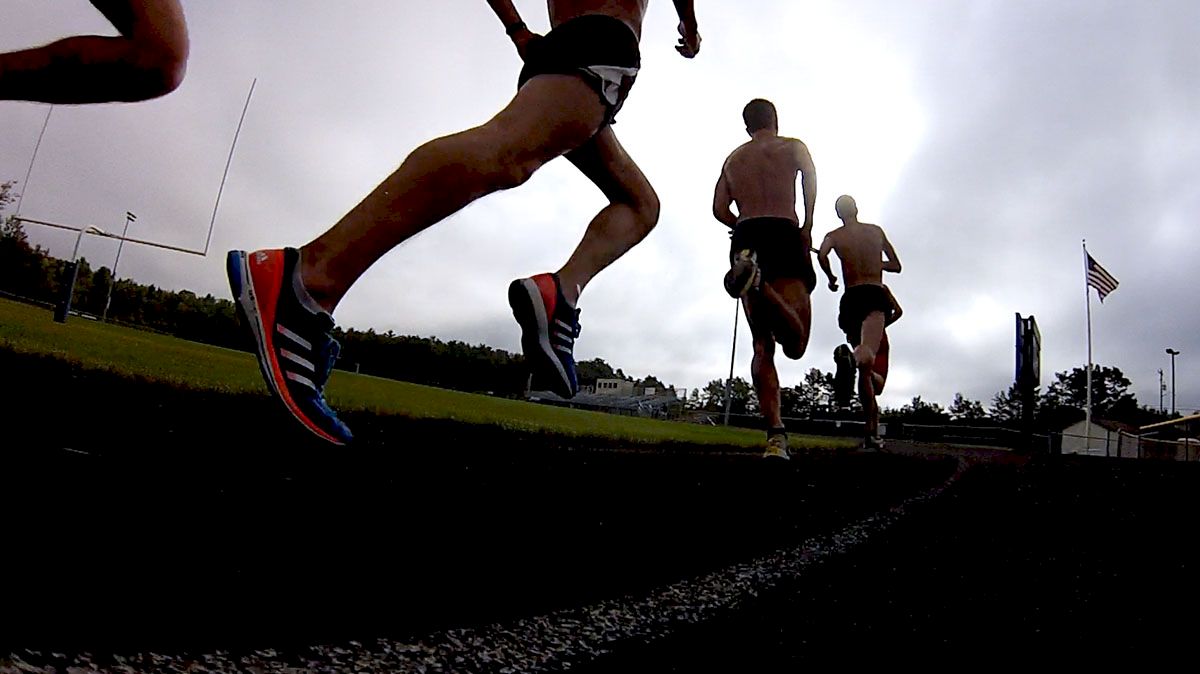
3806: Miles run in 2013 leading up to CIM
50+: Hours a week I worked in the clinic
714: Final 7 week mileage block
21.4: Final 7 week long run average
28: Degrees at the start line
34: Degrees at the finish line
23: Mile my pace began trending the wrong direction
30: Seconds off the Olympic Trials Qualifying Time
3: Seconds slower than my PR
The chase of time and performance standards is integral throughout our sport of distance running and can be seen at every level. In high school, we learn the importance of this chase as a team’s top 7 and the coveted spots to qualify for NXN or Foot Locker become markers of success. College brings about regional and national qualifying times and places. Professional track has World A and B standards that must be met to represent Team USA. Masters athletes have incremental age group records. The marathoning world offers the infamous Boston Qualifier to the masses, US Olympic Trials Qualifiers to the elites, and Team USA Olympic berths for the three highest placing athletes at the US Olympic Trials.
 As I’ve worked my way through the ranks, I currently find myself as an avid US Olympic Trials chaser. Exactly two years ago I qualified for my first US Olympic Marathon Trials by running a personal best of 2:18:26 in a Hail Mary attempt 5 weeks from the trials at the 2011 California International Marathon (CIM). I just snuck under the Olympic Trials standard of 2:19:00 and garnered “15-Minutes of Fame” in the running world with a Quote of the Day on Letsun.com and brief articles with RunnersWorld Online and Flotrack. My state of euphoria lasted for weeks.
As I’ve worked my way through the ranks, I currently find myself as an avid US Olympic Trials chaser. Exactly two years ago I qualified for my first US Olympic Marathon Trials by running a personal best of 2:18:26 in a Hail Mary attempt 5 weeks from the trials at the 2011 California International Marathon (CIM). I just snuck under the Olympic Trials standard of 2:19:00 and garnered “15-Minutes of Fame” in the running world with a Quote of the Day on Letsun.com and brief articles with RunnersWorld Online and Flotrack. My state of euphoria lasted for weeks.
Heading into 2012, my wife, Lindsay, and I landed an amazing opportunity to relocate to Mammoth Lakes, CA. I took a job at the S.P.O.R.T. Center and Performance Lab working as a physical therapist and physiologist and we both began an extended altitude training stint. After an amazing 2 years of serving the community, running with some of the best athletes in the country and making unbelievable friendships, we decided to move back to Sacramento to escape the harsh winters and be closer to our families.
The timing of this move proved to be challenging on my training. For the past 6 weeks I have slowly phased out of my job in Mammoth, into my position at Rocklin Physical Therapy, and continued to teach my community college class in Mammoth. This biweekly 5 hour commute and nearly 55 hour work week forced me back into early morning workouts, late night evening runs and functioning off little sleep as I had perfected years ago in graduate school.
Fortunately, my ability to continue prehab work kept me healthy through the transition and this past weekend I had my next opportunity to chase an Olympic Trials qualifying time when I lined up for the 2013 CIM. With grand memories of prior success on the course, I loved my chances.
A slight difference in the equation this time was the new US Olympic Marathon Trials standard announced by USATF: 2:18:00, 1 minute faster than the mark in 2012. Based on our training, my coach, Mike McKeeman, and I were confident in my ability to achieve this new mark.
The race unfolded almost exactly as we had planned. I went through half way in 1:08:44 and hit 20 miles feeling confident and ready for the final 10 kilometer push for the finish.
Shortly after 21 miles, however, the cramps in my hamstrings that had begun at mile 16 worsened. My stride was shortened, became more mechanical, and the pace trended in the wrong direction. My lack in oversight to dress warmer (i.e. half tights and head warmer), and quick early splits had begun to bite back. This every so slight energy budget mishap was what ultimately left me coming down the homestretch heart broken as I saw the clock tick past 2:18:00.
Final time: 2:18:29
Initially my frustration was with USATF in tightening a standard that only 66 men in the country had hit in the previous Olympic cycle. If 118 men in the US Olympic Marathon Trials is too many, which most would argue is not (52 men qualified by running half marathons) then tighten the half marathon qualifying standard instead!
But, as the emotional reaction wore off I was able to objectively analyze my race. With heat transfer, energy expenditure and neuromuscular function being an ever evolving cycle during a marathon, extreme environmental conditions, such as freezing temperatures like what was experienced during Sunday’s race, heighten the effect of those variables. I chalk this failed attempt to qualify for the 2016 trials as a personal misjudgment in my underdressing, aggressive race tactics, and general fatigue from life circumstances.
On the positive side, all was not lost in the Tollefson household during Sunday’s race in Sacramento. My wife ran a perfectly executed race to cross the line in a PR of 2:41:31 and in the process reeled in her second US Olympic Marathon Trials berth! Unfortunately this means that going into 2014 she has bragging rights and I have kitchen duty…
I am, however, very confident that with the wonderful support system I have through SRA Elite, my wife, family and coach, PowerBar, and Chico State Wildcat Family, I will run a qualifying time in the next two years. But, for anyone who has trained, tapered and raced a marathon will attest to, the thought of once again grinding out the hundreds of hours needed to prep for the next race is currently a bit too daunting and raw.
Although Sunday’s race wound up just 3 seconds slower than my first qualifying mark and personal best over the distance, I leave the 2013 season on the opposite end of the 2011 euphoria spectrum. This year’s hunt for standards proved elusive and as a result I feel unaccomplished. But, these standards keep our sport competitive and we as athletes will continue to find the next higher standard to chase once one is attained. So, as I look towards 2014, I say to USATF, GAME ON!
Race details:
Gear: BROOKS Green Silence, SRA Elite racing singlet, CEPs, shorts (mistake), arm sleeves, gloves, long sleeve throwaway top (thrown too early), BROOKS 80’s sunglasses.
Fuel: 2.5 Chocolate PowerBar Gels, 24 oz Lemon-Lime PowerBar drink
Pack: Drew Polley, Stephan Shay, and teammate Anthony Costales.
Splits: 5:31, 5:18, 5:11, 5:05, 5:13, 5:07, 5:14, 5:18, 5:18, 5:12, 5:14, 5:15, 5:10, 5:10, 5:14, 5:11, 5:11, 5:18, 5:12, 5:20, 5:15, 5:13, 5:21, 5:26, 5:29, 5:33; 2:18:29
You can follow Tim Tollefson on his journey either on his blog or on Twitter.
50+: Hours a week I worked in the clinic
714: Final 7 week mileage block
21.4: Final 7 week long run average
28: Degrees at the start line
34: Degrees at the finish line
23: Mile my pace began trending the wrong direction
30: Seconds off the Olympic Trials Qualifying Time
3: Seconds slower than my PR
The chase of time and performance standards is integral throughout our sport of distance running and can be seen at every level. In high school, we learn the importance of this chase as a team’s top 7 and the coveted spots to qualify for NXN or Foot Locker become markers of success. College brings about regional and national qualifying times and places. Professional track has World A and B standards that must be met to represent Team USA. Masters athletes have incremental age group records. The marathoning world offers the infamous Boston Qualifier to the masses, US Olympic Trials Qualifiers to the elites, and Team USA Olympic berths for the three highest placing athletes at the US Olympic Trials.
Heading into 2012, my wife, Lindsay, and I landed an amazing opportunity to relocate to Mammoth Lakes, CA. I took a job at the S.P.O.R.T. Center and Performance Lab working as a physical therapist and physiologist and we both began an extended altitude training stint. After an amazing 2 years of serving the community, running with some of the best athletes in the country and making unbelievable friendships, we decided to move back to Sacramento to escape the harsh winters and be closer to our families.
The timing of this move proved to be challenging on my training. For the past 6 weeks I have slowly phased out of my job in Mammoth, into my position at Rocklin Physical Therapy, and continued to teach my community college class in Mammoth. This biweekly 5 hour commute and nearly 55 hour work week forced me back into early morning workouts, late night evening runs and functioning off little sleep as I had perfected years ago in graduate school.
Fortunately, my ability to continue prehab work kept me healthy through the transition and this past weekend I had my next opportunity to chase an Olympic Trials qualifying time when I lined up for the 2013 CIM. With grand memories of prior success on the course, I loved my chances.
A slight difference in the equation this time was the new US Olympic Marathon Trials standard announced by USATF: 2:18:00, 1 minute faster than the mark in 2012. Based on our training, my coach, Mike McKeeman, and I were confident in my ability to achieve this new mark.
The race unfolded almost exactly as we had planned. I went through half way in 1:08:44 and hit 20 miles feeling confident and ready for the final 10 kilometer push for the finish.
Shortly after 21 miles, however, the cramps in my hamstrings that had begun at mile 16 worsened. My stride was shortened, became more mechanical, and the pace trended in the wrong direction. My lack in oversight to dress warmer (i.e. half tights and head warmer), and quick early splits had begun to bite back. This every so slight energy budget mishap was what ultimately left me coming down the homestretch heart broken as I saw the clock tick past 2:18:00.
Final time: 2:18:29
Initially my frustration was with USATF in tightening a standard that only 66 men in the country had hit in the previous Olympic cycle. If 118 men in the US Olympic Marathon Trials is too many, which most would argue is not (52 men qualified by running half marathons) then tighten the half marathon qualifying standard instead!
But, as the emotional reaction wore off I was able to objectively analyze my race. With heat transfer, energy expenditure and neuromuscular function being an ever evolving cycle during a marathon, extreme environmental conditions, such as freezing temperatures like what was experienced during Sunday’s race, heighten the effect of those variables. I chalk this failed attempt to qualify for the 2016 trials as a personal misjudgment in my underdressing, aggressive race tactics, and general fatigue from life circumstances.
On the positive side, all was not lost in the Tollefson household during Sunday’s race in Sacramento. My wife ran a perfectly executed race to cross the line in a PR of 2:41:31 and in the process reeled in her second US Olympic Marathon Trials berth! Unfortunately this means that going into 2014 she has bragging rights and I have kitchen duty…
I am, however, very confident that with the wonderful support system I have through SRA Elite, my wife, family and coach, PowerBar, and Chico State Wildcat Family, I will run a qualifying time in the next two years. But, for anyone who has trained, tapered and raced a marathon will attest to, the thought of once again grinding out the hundreds of hours needed to prep for the next race is currently a bit too daunting and raw.
Although Sunday’s race wound up just 3 seconds slower than my first qualifying mark and personal best over the distance, I leave the 2013 season on the opposite end of the 2011 euphoria spectrum. This year’s hunt for standards proved elusive and as a result I feel unaccomplished. But, these standards keep our sport competitive and we as athletes will continue to find the next higher standard to chase once one is attained. So, as I look towards 2014, I say to USATF, GAME ON!
Race details:
Gear: BROOKS Green Silence, SRA Elite racing singlet, CEPs, shorts (mistake), arm sleeves, gloves, long sleeve throwaway top (thrown too early), BROOKS 80’s sunglasses.
Fuel: 2.5 Chocolate PowerBar Gels, 24 oz Lemon-Lime PowerBar drink
Pack: Drew Polley, Stephan Shay, and teammate Anthony Costales.
Splits: 5:31, 5:18, 5:11, 5:05, 5:13, 5:07, 5:14, 5:18, 5:18, 5:12, 5:14, 5:15, 5:10, 5:10, 5:14, 5:11, 5:11, 5:18, 5:12, 5:20, 5:15, 5:13, 5:21, 5:26, 5:29, 5:33; 2:18:29
You can follow Tim Tollefson on his journey either on his blog or on Twitter.
Related Content
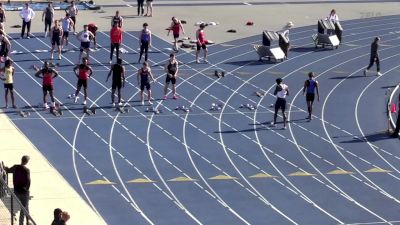 Replay: GVSU Extra Weekend | Apr 25 @ 12 PM
Replay: GVSU Extra Weekend | Apr 25 @ 12 PMApr 26, 2024
 How to Watch: 2025 Ascension Seton Austin Marathon and Half Marathon | Track and Field
How to Watch: 2025 Ascension Seton Austin Marathon and Half Marathon | Track and FieldApr 26, 2024
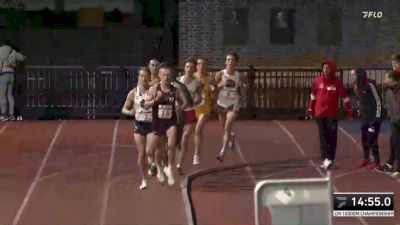 Men's 10k Event 210 - Championship, Finals 1
Men's 10k Event 210 - Championship, Finals 1Apr 26, 2024
 Penn Relays 2024 Results On Day 1: See Which NCAA Stars Won
Penn Relays 2024 Results On Day 1: See Which NCAA Stars WonApr 26, 2024
 Women's 10k Event 209 - Championship, Finals 1
Women's 10k Event 209 - Championship, Finals 1Apr 26, 2024
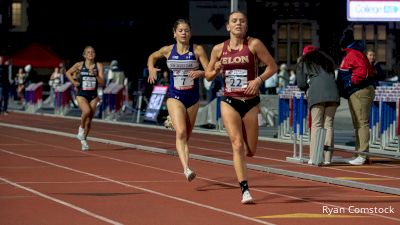 Jette Beermann Pushes To Win Women's 5000M Competition At Penn Relays
Jette Beermann Pushes To Win Women's 5000M Competition At Penn RelaysApr 26, 2024
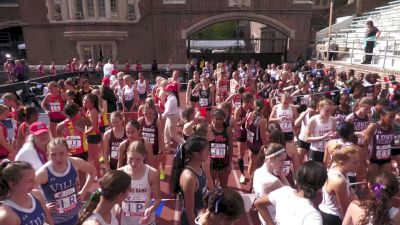 Replay: Paddock - 2024 Penn Relays presented by Toyota | Apr 25 @ 1 PM
Replay: Paddock - 2024 Penn Relays presented by Toyota | Apr 25 @ 1 PMApr 26, 2024
 North Carolina Track And Field Stars Win At Penn Relays Year After Wreck
North Carolina Track And Field Stars Win At Penn Relays Year After WreckApr 26, 2024
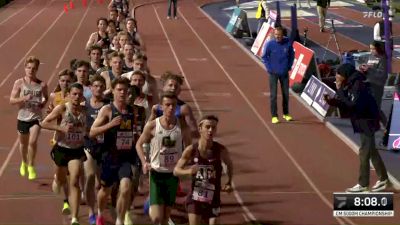 Men's 5k Event 208 - Championship, Finals 3
Men's 5k Event 208 - Championship, Finals 3Apr 26, 2024